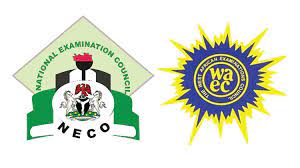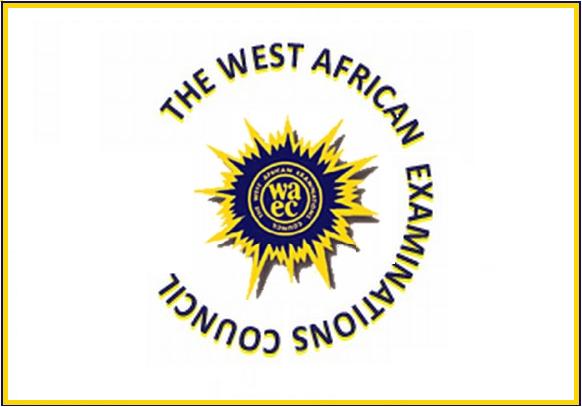Download Free Physics WAEC Past Questions and Answers from 1980 to 2023

Introduction to Physics WAEC Past Questions and Answers
Physics is one of the most challenging yet rewarding subjects in the West African Examinations Council (WAEC) exams. It requires a deep understanding of fundamental principles and the ability to apply these principles to solve problems. For many students, the difference between a passing grade and an excellent one lies in their preparation. One of the most effective ways to prepare for the Physics WAEC is by practicing with past questions and answers.
Our carefully compiled Physics WAEC past questions and answers provide students with an insight into the types of questions that are commonly asked in the exams, the format of the exam, and the best strategies for answering the questions. Let us highlight the benefits of using our Physics WAEC past questions and answers as a study tool and how it can help students achieve their academic goals.
Understanding the Importance of Physics in WAEC
Physics is a core subject in the WAEC exams, and its importance cannot be overstated. It is a prerequisite for many science, engineering, and technology courses in higher institutions. A good grade in Physics can open doors to a wide range of career opportunities in fields such as engineering, medicine, computer science, and environmental science.
The WAEC Physics exam tests students on various topics, including mechanics, electricity and magnetism, optics, thermodynamics, and atomic physics. The exam is designed to assess students’ understanding of these concepts, their ability to apply them in real-world scenarios, and their problem-solving skills.
Given the significance of Physics in WAEC, it is crucial for students to prepare adequately for the exam. One of the most effective ways to do this is by practicing with past questions and answers.
Benefits of Using Physics WAEC Past Questions and Answers
Using Physics WAEC past questions and answers offers several benefits that can significantly enhance a student’s exam preparation:
- Familiarization with Exam Format: Past questions give students a clear idea of the exam format, including the types of questions asked, the distribution of marks, and the time allocated for each section. This familiarity can help reduce exam anxiety and boost confidence.
- Identification of Common Topics: By practicing with past questions, students can identify the topics that are frequently tested in the exams. This allows them to focus their revision on these key areas, ensuring that they are well-prepared for the most likely questions.
- Development of Problem-Solving Skills: Physics is a subject that requires strong problem-solving skills. By working through past questions, students can practice applying their knowledge to different problems, improving their ability to think critically and solve complex questions under exam conditions.
- Time Management: Time management is crucial in any exam. Practicing with past questions allows students to develop strategies for managing their time effectively during the exam, ensuring that they can complete all the questions within the allotted time.
- Self-Assessment: Past questions provide an excellent tool for self-assessment. Students can use them to gauge their understanding of the subject, identify their strengths and weaknesses, and track their progress over time.
How to Effectively Use Physics WAEC Past Questions and Answers
To get the most out of Physics WAEC past questions and answers, students need to use them effectively. Here are some tips on how to do this:
- Start Early: The earlier you start practicing with past questions, the better. This gives you ample time to cover all the topics, practice different types of questions, and revise your answers.
- Simulate Exam Conditions: When practicing with past questions, try to simulate exam conditions as closely as possible. This means timing yourself, working in a quiet environment, and avoiding distractions. This will help you get used to the pressure of the exam and improve your time management skills.
- Review Your Answers: After completing each set of past questions, take the time to review your answers. Identify any mistakes you made and try to understand why you made them. This will help you avoid similar mistakes in the actual exam.
- Focus on Weak Areas: Use past questions to identify your weak areas and focus your revision on these topics. This will help you strengthen your understanding and improve your performance in the exam.
- Seek Help When Needed: If you find certain questions difficult or confusing, don’t hesitate to seek help. You can ask your teacher, a tutor, or a classmate for assistance. You can also use online resources to clarify any concepts you don’t understand.
Common Mistakes to Avoid When Using Past Questions and Answers
While using Physics WAEC past questions and answers can be highly beneficial, there are some common mistakes that students should avoid:
- Relying Solely on Past Questions: While past questions are a valuable study tool, they should not be the only resource you use to prepare for the exam. Make sure to also study your textbooks, class notes, and other supplementary materials.
- Ignoring the Marking Scheme: The marking scheme is an essential part of the exam. It shows you how marks are allocated for each question and what the examiners are looking for in your answers. Make sure to study the marking scheme alongside the past questions to understand how to structure your answers effectively.
- Not Timing Yourself: Time management is crucial in the WAEC exams. If you don’t practice answering past questions within the allotted time, you may struggle to complete the exam on time. Always time yourself when practicing with past questions to improve your speed and efficiency.
- Skipping Difficult Questions: It’s tempting to skip difficult questions and focus on the easier ones, but this can be a mistake. Try to tackle all the questions, even if they seem challenging. This will help you develop your problem-solving skills and prepare you for the unexpected in the actual exam.
- Not Reviewing Your Answers: Reviewing your answers is just as important as practicing the questions. If you don’t review your answers, you won’t learn from your mistakes or identify areas where you need to improve.
The Role of Past Questions in Building Confidence
One of the biggest challenges students face in the WAEC exams is a lack of confidence. Many students feel overwhelmed by the sheer volume of material they need to study and the pressure to perform well. However, using past questions and answers can help build confidence in several ways:
- Familiarity with the Exam Format: As mentioned earlier, past questions give students a clear idea of what to expect in the exam. This familiarity can help reduce anxiety and make students feel more confident about their ability to tackle the questions.
- Positive Reinforcement: When students practice with past questions and see that they can answer them correctly, it reinforces their belief in their own abilities. This positive reinforcement can boost their confidence and motivate them to continue studying.
- Mastery of Key Concepts: By practicing with past questions, students can master the key concepts and topics that are likely to be tested in the exam. This mastery gives them the confidence to approach the exam with a clear understanding of the subject matter.
- Improved Problem-Solving Skills: As students practice more and more past questions, their problem-solving skills improve. This not only helps them answer the questions more accurately but also gives them the confidence to tackle even the most challenging problems in the exam.

Accessing Quality Physics WAEC Past Questions and Answers
Not all past questions and answers are created equal. It’s essential to access high-quality materials that are accurate, comprehensive, and up-to-date. Here are some tips on how to find quality Physics WAEC past questions and answers:
- Official WAEC Publications: The most reliable source of past questions and answers is the official WAEC publications. These materials are produced by WAEC and are designed to be as close to the actual exam as possible. https://www.waecnigeria.org/
- Educational Websites: Several educational websites offer free or paid access to WAEC past questions and answers. Make sure to choose reputable websites that provide accurate and well-organized materials.
- Books and Study Guides: There are many books and study guides available that contain Physics WAEC past questions and answers. Look for books that are published by reputable educational publishers and that have been reviewed positively by other students.
- Study Groups: Joining a study group can also be a great way to access past questions and answers. You can share resources with your peers, discuss difficult questions, and learn from each other’s experiences.
Combining Past Questions with Other Study Resources
While Physics WAEC past questions and answers are an invaluable study tool, they should be used in conjunction with other resources to maximize your preparation. Here are some additional study resources that can complement your use of past questions:
- Textbooks: Your Physics textbook is your primary source of information. Make sure to study the relevant chapters thoroughly and use them to clarify any concepts you don’t understand.
- Class Notes: Your class notes are a summary of what you’ve learned in class. They are an excellent resource for revision and can help you review the key points of each topic.
- Online Resources: There are many online resources available that can help you prepare for the Physics WAEC exam. These include video tutorials, interactive quizzes, and online forums where you can ask questions and get help from other students.
- Tutoring: If you’re struggling with certain topics, consider getting extra help from a tutor. A tutor can provide personalized instruction and help you overcome any difficulties you’re facing.
- Practice Tests: In addition to past questions, practice tests are another great way to prepare for the exam. Practice tests are designed to simulate the actual exam and can help you test your knowledge and improve your exam technique.
Testimonials from Successful Students Who used our past Questions
Many students who have used Physics WAEC past questions and answers have gone on to achieve excellent results in their exams. Here are some testimonials from successful students:
- John A., Engineering Student: “Practicing with Physics WAEC past questions was the best decision I made during my exam preparation. It helped me understand the exam format and focus on the most important topics. I scored an A in Physics and got admitted to study Engineering at my dream university.”
- Mary K., Medical Student: “I was really nervous about the Physics WAEC exam, but using past questions gave me the confidence I needed. I practiced every day and reviewed my answers carefully. When I saw similar questions in the actual exam, I knew I was well-prepared. I couldn’t have done it without the past questions.”
- David O., Computer Science Student: “The Physics WAEC past questions and answers were a game-changer for me. They helped me develop my problem-solving skills and manage my time effectively during the exam. I highly recommend them to anyone preparing for the WAEC exams.”
FAQs Physics WAEC (West African Examinations Council) past questions along with their answers:
1. What is the unit of electrical resistance?
Answer: The unit of electrical resistance is the ohm (Ω).
2. A force of 10 N acts on a body of mass 2 kg. What is the acceleration of the body?
Answer:
- F=maF = ma
- 10 N=2 kg×a
- a=10 N2 kg=5 m/s2
3. What is the refractive index of a medium if the speed of light in the medium is 2×108 m/s2
Answer:
- n=cv=3×108 m/s2×108 m/s=1.5
4. A transformer has 200 turns in the primary coil and 100 turns in the secondary coil. If the voltage in the primary coil is 240 V, what is the voltage in the secondary coil?
Answer:
- VpVs=NpNs
- 240 VVs=200100\frac
- Vs=240 V2=120 V
5. What is the heat required to raise the temperature of 2 kg of water from 20°C to 100°C? (Specific heat capacity of water = 4200 J/kg°C)
Answer:
- Q=mcΔTQ = mc\Delta T
- Q=2 kg×4200 J/kg°C×(100−20) °C
- Q=2×4200×80=672,000 J
6. Calculate the pressure exerted by a force of 50 N acting on an area of 2 m².
Answer:
- P=FA=50 N2 m2=25 N/m2
7. If the frequency of a wave is 50 Hz and its wavelength is 6 m, what is the speed of the wave?
Answer:
- v=fλv = f\lambda
- v=50 Hz×6 m=300 m/s
8. A car moves with a uniform acceleration from rest to a speed of 25 m/s in 10 seconds. What is its acceleration?
Answer:
- a=v−ut=25 m/s−0 m/s10 s=2.5 m/s2
FAQs: Questions Section B
1. What is the unit of the quantity obtained by dividing work done by time?
2. Define specific latent heat of fusion.
3. A car starts from rest and accelerates uniformly at 2 m/s² for 10 seconds. What is the final velocity of the car?
4. State Newton’s second law of motion.
5. A wire of length 1.5 m is stretched by a force of 30 N. If the extension produced is 0.01 m, calculate the Young’s modulus of the material.
6. What is the function of a transformer in an electric circuit?
7. A current of 3 A flows through a resistor of 5 Ω. Calculate the power dissipated in the resistor.
8. What is the principle of operation of a hydraulic press?
9. Describe the Doppler effect.
10. A ray of light passes from air into water at an angle of incidence of 30°. If the refractive index of water is 1.33, calculate the angle of refraction.
11. What is meant by thermal equilibrium?
12. Define the term “half-life” as used in radioactivity.
13. Explain the phenomenon of diffraction of waves.
14. What is the difference between longitudinal and transverse waves?
15. A mass of 0.5 kg is attached to a spring with a force constant of 200 N/m. What is the period of oscillation of the mass-spring system?
16. State the law of conservation of linear momentum.
17. An object is placed 10 cm from a concave mirror with a focal length of 5 cm. Calculate the image distance.
18. What is the work function of a metal if the frequency of incident light that just causes the emission of electrons is 6.0 x 10¹⁴ Hz? (Planck’s constant, h = 6.63 x 10⁻³⁴ Js)
19. Differentiate between conductors and insulators.
20. Explain the term “magnetic flux.”
Answers
1. The unit is Watt (W).
2. Specific latent heat of fusion is the amount of heat require to convert a unit mass of a substance from solid to liquid without a change in temperature.
3. Final velocity, v=u+at=0+(2×10)=20 m/s
4. Newton’s second law of motion states that the rate of change of momentum of a body is directly proportional to the applied force and takes place in the direction of the force.
5. Young’s modulus, Y. Assuming the cross-sectional area (A) is given, Y=30×1.5A×0.01.
6. A transformer is used to increase or decrease the voltage of an alternating current (AC) in a circuit.
7. Power, P=I2R=32×5=45 W
8. A hydraulic press operates on Pascal’s principle, which states that when pressure is applied to a confined fluid, the pressure change is transmitted undiminished to all parts of the fluid.
9. The Doppler effect is the change in frequency or wavelength of a wave in relation to an observer moving relative to the wave source.
10. Angle of refraction, r=arcsin(sinin)=arcsin(sin30∘1.33)≈22.09∘
11. Thermal equilibrium is the condition in which two objects in contact with each other exchange no net heat energy, meaning they are at the same temperature.
12. Half-life is the time require for half the quantity of a radioactive substance to decay.
13. Diffraction is the bending of waves around obstacles or the spreading of waves when they pass through small openings.
14. Longitudinal waves are waves in which the particle displacement is parallel to the direction of wave propagation, while transverse waves have particle displacement perpendicular to the direction of wave propagation.
15. Period, T=2πmk=2π0.5200≈0.31 seconds
16. The law of conservation of linear momentum states that the total linear momentum of a closed system remains constant, provided no external force acts on it.
17. Using the mirror equation 1f=1v+1u\frac{1}{f} = \frac{1}{v} + \frac{1}{u}, where u=−10 cmu = -10 \, \text{cm}, f=5 cmf = 5 \, \text{cm}, solve for vv: 1v=15+110=310⇒v=3.33 cm.
18. Work function, W=h×f=6.63×10−34×6.0×1014≈3.98×10−19 J
19. Conductors allow the flow of electric current through them due to the presence of free electrons, while insulators do not conduct electricity because they lack free electrons.
20. Magnetic flux is the measure of the quantity of magnetism, considering the strength and extent of a magnetic field, represented by the number of magnetic field lines passing through a surface.
⇒CLICK HERE TO DOWNLOAD ALL
Conclusion: The Key to Success in Physics WAEC
Success in the Physics WAEC exam is within your reach if you prepare adequately and use the right study tools. Physics WAEC past questions and answers are one of the most effective resources you can use to boost your exam preparation. They provide valuable insights into the exam format, help you identify key topics, improve your problem-solving skills, and build your confidence.
By practicing with past questions, reviewing your answers, and using them in conjunction with other study resources, you can maximize your chances of achieving a high score in the Physics WAEC exam. Whether you’re aiming for a career in science, engineering, or technology, a strong performance in Physics WAEC can open the doors to endless opportunities.
Start your preparation today with Physics WAEC past questions and answers, and take the first step towards achieving your academic and career goals.
Discover more from Examsabi
Subscribe to get the latest posts sent to your email.










